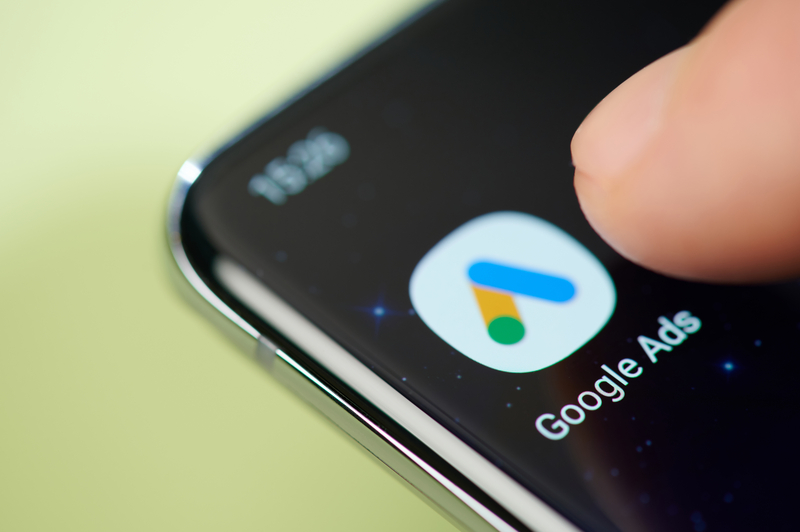
AI-powered features from Google Ads. What the future holds
In the future, Google Ads will probably release more advanced AI-powered features aimed at making advertising even more efficient, personalised, and automated. You may design advertisements that adapt to show more relevant messages to more people while still reaching your ROI objective by integrating AI-powered search ad products. This AI-powered system can write all or part of your advertisement depending on what will serve your objectives the best. Some social media ad platforms already have this feature; they employ sophisticated automation to recommend ads for you to run based on the links you are pushing.
Here are the key AI innovations and trends to watch for in the Google Ads platform:
1. Enhanced Personalisation
- What to expect: Google Ads is expected to expand its AI capabilities to offer deeper personalisation for users. AI could create ultra-tailored ads that change in real time based on individual user preferences, behaviors, and contexts. This might include dynamic adjustments to ad creatives, products, and messaging to cater to each unique user’s intent.
- Why it matters: Personalised ads have a higher likelihood of engagement and conversion. By delivering hyper-relevant content, advertisers can significantly improve campaign performance and ROI.
2. AI-Generated Ad Creatives
- What to expect: Google may introduce AI-driven tools that can generate full ad creatives, including text, images, and videos, based on campaign objectives, target audiences, and trends. Instead of relying on human input for ad creation, AI will handle the design process end-to-end, creating ads optimised for specific platforms and user preferences.
- Why it matters: This reduces the need for manual creative production, allowing advertisers to focus on strategy while AI handles the visual and messaging components.
3. Conversational AI for Ads
- What to expect: Future Google Ads might leverage AI-powered conversational tools like Google Bard or Duplex to engage users directly within ads. These conversational ads will allow users to interact with ads via chat or voice commands, ask questions, browse products, and even make purchases directly within the ad.
- Why it matters: Conversational ads will offer a more interactive and engaging experience, helping advertisers convert users by providing instant, real-time engagement.
4. Predictive AI for Campaign Performance
- What to expect: Google Ads will likely introduce more robust predictive AI features that forecast campaign outcomes based on real-time data, past performance, and market trends. AI will predict which ads will drive the most conversions, sales, or engagement before campaigns even go live, allowing advertisers to adjust strategies proactively.
- Why it matters: Predictive capabilities will help businesses optimise their campaigns before they spend any budget, ensuring a higher return on ad spend (ROAS) and more efficient campaigns.
5. End-to-End Campaign Automation
- What to expect: While features like Smart Campaigns already offer a level of automation, future Google Ads tools may take this further by automating the entire campaign process—from strategy and keyword selection to bidding, budgeting, and ad creation. AI will be able to fully manage campaigns, with minimal human input, based on set objectives.
- Why it matters: This will simplify advertising for businesses of all sizes, allowing even those with limited marketing expertise to run highly optimised campaigns.
6. AI-Powered Video Ads
- What to expect: As video becomes an increasingly dominant format, Google may introduce AI-powered tools to help advertisers create, edit, and optimise video ads automatically. These tools could analyse video content, user preferences, and engagement metrics to fine-tune ad creatives in real time.
- Why it matters: Video ads are powerful but can be resource-intensive to produce. AI will make video ad creation faster and more accessible while improving targeting and performance.
7. Advanced AI Attribution Models
- What to expect: AI will refine how Google Ads attributes conversions across multiple touchpoints in the customer journey. These new AI-driven attribution models will better analyse how each interaction, across different devices and channels, contributes to a conversion. Expect models that can learn and adapt over time, improving accuracy.
- Why it matters: Understanding which ad interactions are driving conversions allows advertisers to optimise their campaigns more effectively, allocate budgets more efficiently, and maximise their ad spend.
8. Privacy-Focused AI Tools
- What to expect: With increasing regulations around data privacy (like GDPR and CCPA), Google Ads will further integrate privacy-safe machine learning models, such as Federated Learning and Differential Privacy. These will allow AI to provide insights and optimise campaigns without relying on personally identifiable information (PII).
- Why it matters: As third-party cookies phase out, privacy-focused AI tools will ensure advertisers can still reach relevant audiences while staying compliant with regulations and protecting user data.
9. AI-Driven Creative Optimisation
- What to expect: Google Ads is likely to introduce more powerful AI tools to automatically test and optimise creative elements such as headlines, images, and calls-to-action. Future features may include deeper testing of visual elements (e.g., colour schemes, layouts) and more sophisticated split-testing to identify which combinations yield the best results.
- Why it matters: AI will take the guesswork out of creative testing, ensuring that the highest-performing ads are always served, resulting in better engagement and conversions.
10. Real-Time Audience Insights and Adjustments
- What to expect: Google’s AI will be able to provide real-time insights into audience behaviour, adjusting campaigns dynamically to reflect changes in user behaviour, market trends, or external factors (e.g., seasonality or economic shifts).
- Why it matters: This will allow campaigns to be more flexible and responsive, ensuring advertisers can adapt to changes instantly rather than after campaign performance reports are generated.
11. Smarter Shopping Ads
- What to expect: AI may offer even more advanced tools for e-commerce advertisers. Future features could include AI-driven product recommendations within Shopping Ads, where the system suggests relevant products to users based on their previous shopping behaviour, current trends, or even predictive needs.
- Why it matters: Enhanced product recommendations can lead to more targeted ads, improving click-through rates and increasing conversions for e-commerce businesses.
12. Voice Search Integration
- What to expect: As voice search grows in popularity, AI in Google Ads will probably include more advanced voice search ad targeting. AI tools could help advertisers create and optimise campaigns specifically for voice-based queries, aligning ads with how users speak versus type.
- Why it matters: Voice search requires different ad strategies, and AI can help advertisers capitalise on this growing trend by delivering more relevant voice-activated ads.
13. Cross-Platform Integration with AI
- What to expect: Google Ads will likely enhance AI-powered features to integrate more seamlessly across different platforms (Search, Display, YouTube, Gmail, Maps, etc.). AI could manage campaigns holistically, understanding the user’s entire journey across platforms and delivering consistent, tailored ad experiences.
- Why it matters: This will help advertisers provide a more cohesive experience for users, improving the chances of engagement and conversion.
14. AI-Enhanced Ad Testing and Experimentation
- What to expect: Google Ads will likely expand its experimentation features, allowing AI to run more complex A/B tests, multi-variant experiments, and split tests automatically. AI could continuously experiment with different campaign elements, analysing results and automatically adjusting strategies for optimal performance.
- Why it matters: Faster, automated testing will help advertisers refine their campaigns more quickly and effectively, improving overall ad performance.
15. Natural Language Processing for Ad Creation
- What to expect: Google may enhance its natural language processing (NLP) capabilities to create smarter, more intuitive ad copy. AI could analyse the context of user searches or web content to generate highly relevant and engaging ad copy that aligns with user intent.
- Why it matters: NLP-generated ad copy would lead to higher engagement rates and allow for more fluid and context-aware advertising.
Conclusion
The future of AI-powered features in Google Ads will be marked by greater automation, personalisation, and real-time optimisation. Advertisers should look out for these developments to stay competitive and leverage the full potential of AI to drive better results with less manual effort. As AI becomes more integrated, Google Ads will increasingly cater to the demands of privacy, creativity, and efficiency.
